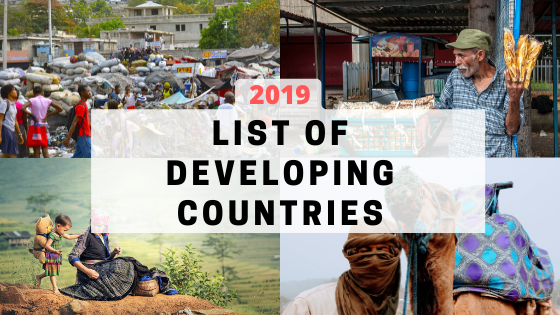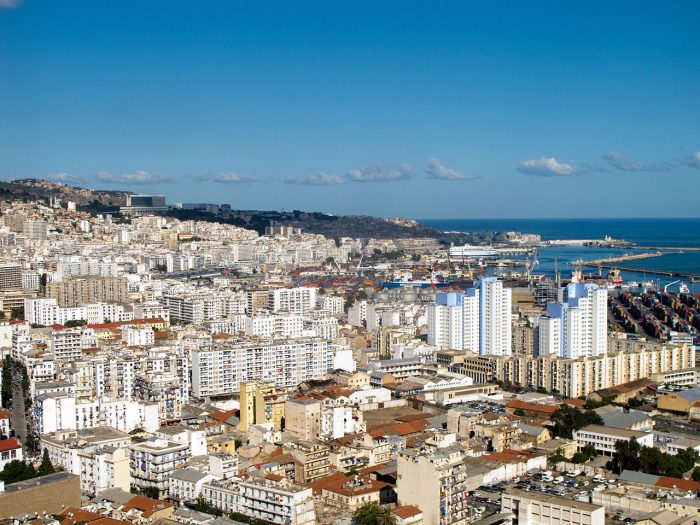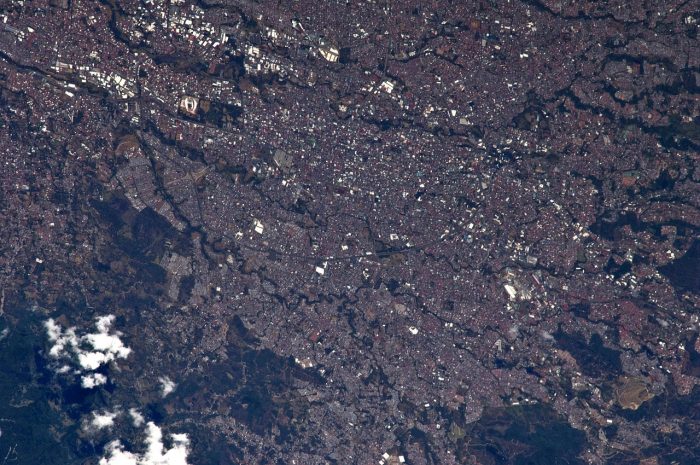
Are you curious about which countries in the world are considered to be Third World countries? There are many countries in the world considered Third World countries, although getting an exact list of these countries is difficult because of disagreements about exactly what the term “Third World country” means.
In fact, the very term Third World country is falling out of use and being replaced with other terms such as “least developed countries” or more preferably “developing countries”. In order to make any progress with listing third world/developing countries, let’s first discuss what the term developing country means and what countries qualify as developing countries.
“The developing world is full of entrepreneurs and visionaries who, with access to education, equity and credit, would play a key role in developing the economic situations in their countries.” — Muhammad Yunus
Defining The “Third World”
The term third world country was initially created during the Cold War when it was applied to countries that were not aligned with one of the two major political spheres at the time. The first and second world countries belonged to either the North Atlantic Treaty Organization (or NATO) or the Communist bloc. At this time, the first world countries were nations found in Western Europe, the United States, South Korea, Japan, and Canada. Meanwhile, the second world countries were the Soviet Union and its allied states, as well as Cuba and China. Finally, the Third World countries were countries that did not align with either of these groups and were neutral, having their own political and economic structures uninfluenced by either of the two groups.
After the fall of the Soviet Union, with its territories becoming their own independent nations, the use of the term Third World shifted. In current times the term Third World country is used to describe a nation that lacks the societal, political, and economic development of the First World or Second World nations. Essentially, the term Third World country is used to describe nonindustrialized and economically struggling countries, as well as countries that have just recently industrialized.
Do in part to the confusion over the definition of the term “Third World,” as well as a desire to be considerate of citizens in “Third World” countries, the preferred term for countries in the process of developing is, as you might imagine, “developing countries.” The United Nations also maintains a list of countries that have the least economic, political, and technological development, describing them as the Least Developed Countries or LDCs.
“People in third world countries think and laugh and smile, just like us. We have got to understand that we are them and they are us.” — Rachel Corrie
The criteria for being categorized as an LDC is often shifting since the nations of the world are always developing. Because of this, what nations are classified as LDCs often shift as well. As of the most recent classification, the LDC nations include Afghanistan, Bangladesh, Cambodia, Guinea, Haiti, and Laos, among others. One does not need to be one of the globe’s Least Developed Nations to be considered a developing nation, and for this reason, the list of developing nations is much larger than the list of Least Developed Nations.
This category of developing countries includes an extremely diverse array of individuals, groups, and cultures. To get an idea of how different nations included in the list of developing nations can be from one another, let’s take a look at just a few of the countries included in the list of the developing nations.
Some Of The Many Developing Nations
Algeria

Algiers, the capital city of Algeria. Photo: By Poudou99 – Own work, CC BY 3.0, https://commons.wikimedia.org/w/index.php?curid=11925252
Algeria is located in North Africa on the coast of the Mediterranean Sea, and it is the 10th largest country in the world in terms of area, with a size of approximately 2,380,000 km² or 920,000 mi.². Algeria is home to various ethnic groups such as Arabs, Turks, and sub-Saharan Africans. Algeria’s economy is based on the export of petroleum oils and gases, as well as agriculture. The most populous city within Algeria is Algiers, which is also its capital city. Algiers has a population of around 2,365,000 people.
Argentina
Argentina is a large country found in the southern half of South America, and it is the world’s eighth-largest country by land area, with an area of approximately 2,780,000 km or 1,073,000 mi.². The economy of Argentina is based heavily on natural resources and the utilization of said natural resources to produce machines, tools, and vehicles. The production of food, tobacco, and textiles is also an important part of Argentina’s economy. Argentina is an extremely bio-diverse country, having some of the most substantial ecosystem varieties on the planet playing host to over 1000 species of birds, 375 species of mammals, and 338 reptilian species. Argentina has a population of around 44 million people, the majority of whom are of either Spanish or Italian descent.
Bhutan
Bhutan is found in South Asia, and it has a population of around 720,000 people. Bhutan’s economy is based on tourism, forestry, and agriculture, but almost a fourth of Bhutan’s exports is electrical power provided to India, which is harvested through hydroelectric power. Bhutan is home to various ethnic groups such as the Ngalops and Sharchops.
China
China is the most populous country in the world a population of around 1.404 billion individuals. China also happens to be either the third of the fourth biggest country by land area, with an area of approximately 9,600,000 km² or 3,700,000 mi.² falling within its borders. China is one of the oldest civilizations on the globe. China’s economy is growing rapidly, even though it is still below the economic strength of many other nations in the world. China is predicted to become a major political and economic power over the course of the 21st century. Most of China’s population consider themselves Han Chinese, making Han Chinese the world’s biggest ethnic group.
Costa Rica

Aerial image of San Jose, capital of Costa Rica. Photo: By NASA Astronauts – https://eol.jsc.nasa.gov/scripts/sseop/photo.pl?mission=ISS027&roll=E&frame=9396), Public Domain, https://commons.wikimedia.org/w/index.php?curid=17659635
The Republic of Costa Rica located in Central America, possessing a population of around 5 million people, and a land area of approximately 51,100 km² or 19,700 mi.². This makes Costa Rica the 123rd largest country in the world in terms of population and the 126th largest in terms of land area. Costa Rica’s economy is stable, showing moderate growth over the past decade or so, transitioning from an economy that was once solely based on agriculture to an economy based on agriculture, electronics, IT services, and tourism. In terms of demographics, Costa Rica’s population is somewhat diverse, being around 83.6% white (mainly European Spanish), with the rest being black, Native American or other.
Egypt
Egypt is found in the northeastern part of Africa, adjacent to Sudan and Libya. Egyptian civilization goes back thousands of years, at least to around the 6th – 4th millennia BCE. This makes Egypt one of the countries with the longest histories in the world. The last census estimates that Egypt has a population of around 95,000,000 people. The land area of Egypt is around 1,010,000 square kilometers or 390,000 square miles. Egypt’s economy has grown over the past few decades and currently depends on natural gas, petroleum, media, and agriculture.
Indonesia
Indonesia is found in Southeast Asia, and it is comprised of more than 17,000 islands. If land and sea areas are taken into account Indonesia is the 7th largest country in the world by land area, possessing around 1,900,000 square kilometers or 730,000 square miles of the Earth within its borders. Around 262,000,000 people live in Indonesia, though the vast majority of these people live in the large island of Java. Indonesia is one of the world’s most ethnically diverse countries, with more than 300 distinct ethnic groups living there.
“Indonesia was colonized for 350 years. We lost our mindset for entrepreneurship. We only become workers.” — Ciputra
Latvia
Latvia is located in Northern Europe and it is one of the Baltic states. Latvia is a relatively small country, with a population of only 1,957,000 people. In terms of land area, Latvia is around 64,590 square kilometers or 24,940 square miles in size. Although Latvia had an economic crisis from 2008 to 2010, the country’s economy seems to be improving. Latvia’s economy is based on the production of goods like wood, vehicle parts, minerals, and electrical equipment.
Mongolia

Ulaanbaatar, the capital city of Mongolia. Photo: By Brücke-Osteuropa – Own work, Public Domain, https://commons.wikimedia.org/w/index.php?curid=7298618
Mongolia is located in East Asia, bordered by China and Russia. Mongolia is the 18th largest country in the world in terms of land area, with a size of roughly 1,564,000 square kilometers or 603,900 square miles. However, despite the country’s relatively large size, it is sparsely populated with a population of approximately 3,080,000 people.
Morocco
Morocco is found in Northwest Africa, and with a population of around 35,740,000 people it also has a land area of approximately 710,000 km² or 274,000 mi.² the services sector brings in over half of Morocco’s GDP, with an additional one-fourth of its GDP coming from manufacturing, construction, and mining. The tourism and telecoms industry is growing rapidly. Almost 99% of Morocco’s residence are Arab-Berber in ethnicity.
“The power of the word in Morocco belonged to men and to the authorities. No one asked the point of view of poor people or women.” — Tahar Ben Jelloun
Seychelles
Seychelles is a small country found in an archipelago in the Indian Ocean, approximately 1500 km or 930 miles off the coast of East Africa. The population of Seychelles is fairly small, with an estimated population of 95,000 people it is the 195th largest country in the world. Its land area is also fairly small comprising only 459 km² or 177 mi.². Agricultural and fishing operations, as well as tourism, account for most of the country’s economic activity. Demographics wise, the population of Seychelles is diverse, blending together European, African, and Asian ethnicities, with ethnic groups from China, India, France, and sub-Saharan African countries being with the largest immigrant groups.
Venezuela
Venezuela is found on the northern coast of South America, also comprising many of the small islands found in the Caribbean sea. In 2016 it was estimated that the population of Venezuela was around 31,570,000 people. In terms of land area, Venezuela is the 32nd-largest country in the world, with a land area of approximately 916,400 km² for 353,800 mi.² within its borders. In terms of exports, crude oil and various petroleum oils make up the vast majority of its exports, and it is one of the world’s biggest oil exporters.









